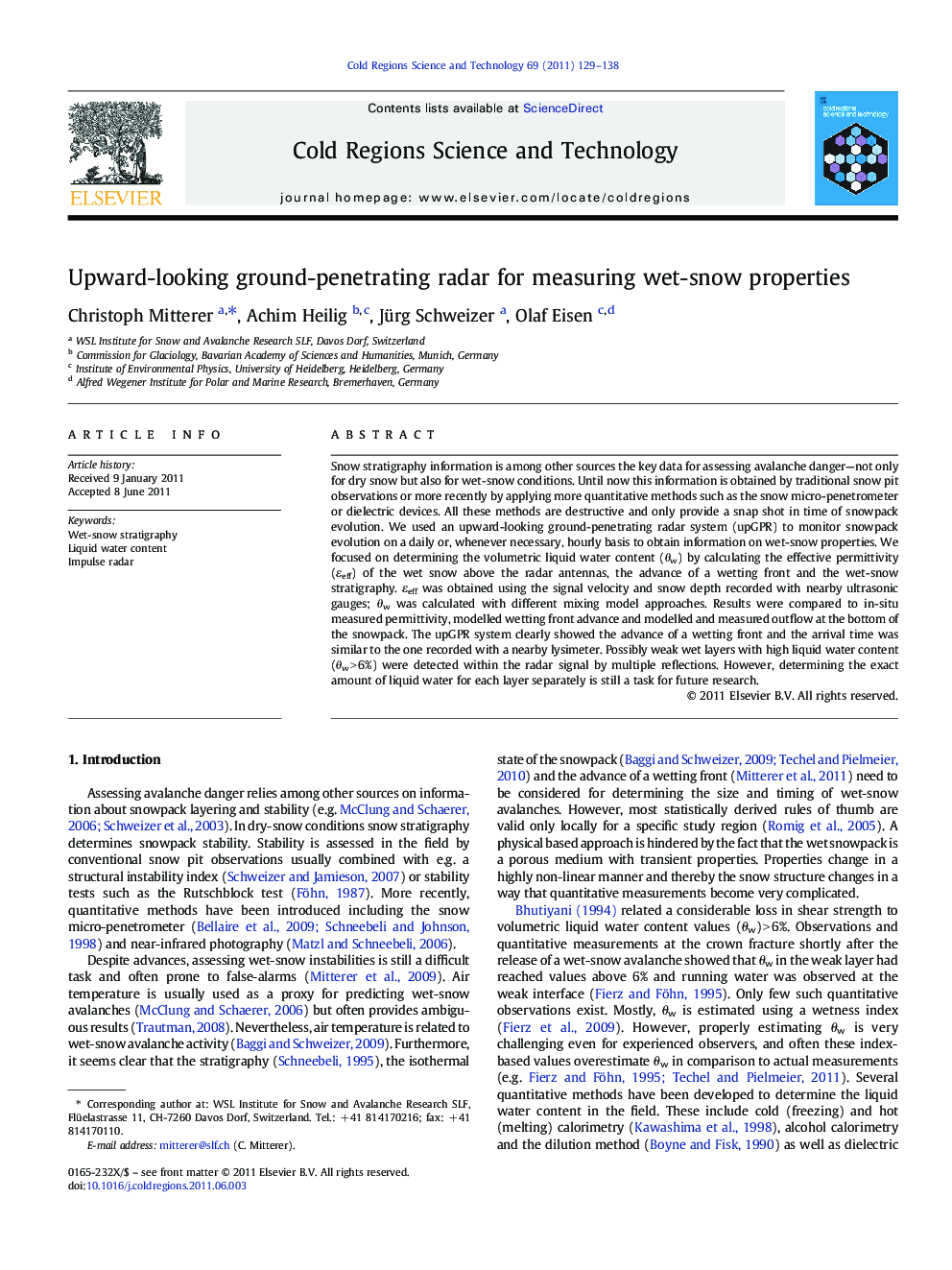| کد مقاله | کد نشریه | سال انتشار | مقاله انگلیسی | نسخه تمام متن |
|---|---|---|---|---|
| 4676066 | 1634488 | 2011 | 10 صفحه PDF | دانلود رایگان |

Snow stratigraphy information is among other sources the key data for assessing avalanche danger—not only for dry snow but also for wet-snow conditions. Until now this information is obtained by traditional snow pit observations or more recently by applying more quantitative methods such as the snow micro-penetrometer or dielectric devices. All these methods are destructive and only provide a snap shot in time of snowpack evolution. We used an upward-looking ground-penetrating radar system (upGPR) to monitor snowpack evolution on a daily or, whenever necessary, hourly basis to obtain information on wet-snow properties. We focused on determining the volumetric liquid water content (θw) by calculating the effective permittivity (εeff) of the wet snow above the radar antennas, the advance of a wetting front and the wet-snow stratigraphy. εeff was obtained using the signal velocity and snow depth recorded with nearby ultrasonic gauges; θw was calculated with different mixing model approaches. Results were compared to in-situ measured permittivity, modelled wetting front advance and modelled and measured outflow at the bottom of the snowpack. The upGPR system clearly showed the advance of a wetting front and the arrival time was similar to the one recorded with a nearby lysimeter. Possibly weak wet layers with high liquid water content (θw > 6%) were detected within the radar signal by multiple reflections. However, determining the exact amount of liquid water for each layer separately is still a task for future research.
► We measured liquid water content in snow using upward-looking ground-penetrating radar.
► We could track the advance of a wetting front percolating through the snowpack.
► It was possible to calculate the amount of liquid water of the entire snowpack.
► It was not possible to distinguish between different flow patterns.
► Strong primary and multiple reflections hint to layers with high liquid water content.
Journal: Cold Regions Science and Technology - Volume 69, Issues 2–3, December 2011, Pages 129–138